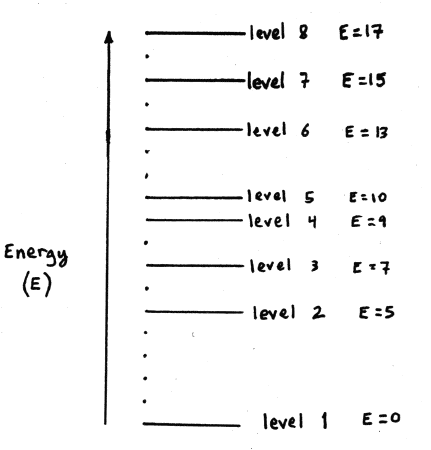Homework #2
Homework #2
Due on Wednesday, June 7th 2000 at the beginning of class (10:10 AM)
Show All Work and Explain your answers.
100 points total
Kepler's 3rd Law
- Use Kepler's 3rd Law and Neptune's semi-major axis of 30.06 AU to derive Neptune's orbital period in years.
- The planet Bajor orbits a star 15 times more massive than our Sun. It's orbital period is 268 days. What is the semi-major axis of its orbit in AU? (HINT: Consider Newton's version of Kepler's 3rd Law, and remember to use ratios!)
How much does it weigh on Mercury?
Mercury's mass is 0.0553 times that of Earth, and Mercury's radius is 0.3824 times Earth's radius. If a goat weighs 120 lbs on Earth, how much does it weigh on Mercury? (HINT: How strong is the gravitational force on the object when on Mercury's surface compared with when on Earth's surface? Use ratios!)
Laser show
The laser pointer used in class emits red light having a wavelength of 6500 Å. (NOTE: 1 Å = 10-10 m)
- What is the frequency of this radiation?
- If a green laser (5000 Å) is used in another class, is the frequency lower, higher, or the same as that of the red laser?
- Through a vacuum, does green light travel faster, slower, or at the same speed as the red light?
The energetic electron
Consider a hypothetical atom with an electron whose possible energy levels are shown below. The energy (in arbitrary units) of each higher level is given relative to the ground (lowest state).

- When the electron jumps from level 1 to 3 it must absorb a photon having a specific energy. Identify another electronic transition that requires the absorption of a photon with the same energy.
- Suppose the electron jumps from level 8 to 4, followed by level 4 to 3. What is the ratio of the energies of the photons emitted.
- If the electron subsequently jumps from level 3 to 2, can the emitted photon be absorbed by another identical atom whose electron is in level 5? Explain carefully.
- Suppose the wavelength of the photon absorbed when the electron jumps from level 2 to 4 is 10,000 Å. What would be the wavelength of the photon it would have to absorb if it were to jump from level 2 to 6?
Cool Threads, Man
Is a person wearing a blue shirt hotter than one wearing a red shirt? How is this consistent with Wien's Law? If they were characters on Star Trek which would be the first to die?
Telescopes
You are an avid amateur astronomer using a reflecting telescope whose collecting mirror is 16 cm in diameter. Let's say that on a clear night you can just barely see star Lisa with this telescope. Star Bart is only 0.01 times as bright as star Lisa.
- What would the diameter of your telescope's mirror need to be in order for you to barely see star Bart?
- Suppose you cannot afford to buy such a large telescope. Could you detect star Bart with photographic film instead of your eye at the focal plane of your small telescope? Explain how.
- Explain why a CCD (charge-coupled device) would allow you to detect even fainter stars using your small telescope, using the same exposure time as with the photographic film.
- Now consider the Hubble Space Telescope. What were 3 reasons for wanting to have such a telescope in space?
Sunspots
A sunspot may be 2000 K cooler than the surrounding photosphere of the Sun (whose temperature is about 6000 K).
- How much energy does the sunspot emit per second, per unit area, relative to the surrounding photosphere?
- Thus, is the sunspot totally black? Why does it look dark?
'Tis The Season
What would the seasons be like if the Earth's axis of rotation were perpendicular to Earth's orbital plane? Would they be more or less extreme than they are now? Explain.
Return to Main Homework Page
